Your roof protects everything inside your home, so it’s worth examining for signs of wear and tear. Check for water stains, leaking or pooled water in the attic, rotted wood, and dark mold.
You’ll also want to inspect the flashing around vent pipes, dormers, and roof-pitch transition points for cracks or deterioration. If you are looking for a roofer, just click the RoofX to proceed.

The roof is a shield that protects everything inside the home. Without a well-maintained roof, everything else can quickly be compromised. Rain, wind, snow, and ultraviolet rays can damage a roof over time. If not repaired, these problems can lead to water leaks and structural damage to the home.
The first step in repairing your roof is to find the problem, of course. Whether it is a hole, an area of missing shingles, or deteriorating wood, there’s only a point in starting work once you know what’s going on. Getting up into your attic or crawlspace to take a closer look is a good idea – it will help you assess the overall condition of your roof and make any necessary repairs.
Strong winds can cause significant damage to your roof, particularly if it is older or already weak. They can dislodge shingles, pull down gutters, and lift the entire roof structure off the house. Regular inspections and prompt repairs following severe wind storms can minimize the risk of these damage types.
Leaks and other issues caused by rainwater can have devastating consequences for your home’s interior, including rot, mold, and weakened foundations. To prevent these problems, regularly inspect your roof for signs of moisture infiltration, such as water stains or damp ceilings. Also, ensure that your gutters and downspouts are clear of debris to allow proper drainage.
It is important to understand the impact that weather can have on your roof repair, particularly regarding safety and quality of artistry. Rain, snow, humidity, and temperature can all affect the ability to access your roof and the effectiveness of repairs. The best time to perform roof repairs is during dry conditions. Trying to work amid a heavy rainstorm or a blizzard can pose health and safety risks and compromise the quality of the repairs. For this reason, late spring through summer and early fall are the best times to carry out roof repair.
Trees are beautiful additions to a home’s landscape, providing shade and blooming flowers. However, they can damage your roof if they hang too low.
Heavy branches that fall during a storm are a major problem for your roof, but even lighter branches and twigs can cause damage. When left to sway in the wind, they can rub against and scrape your roof, wearing down the shingles and potentially creating holes or tearing them off entirely. This can result in shingle replacement or needing to have your entire roof replaced.
Branches that extend over your house can also block air from escaping, leading to moisture and higher energy bills. Over time, these problems can lead to rot and structural damage, as well as pests finding their way into your home’s attic and other areas.
If a fallen tree damages your roof, evacuating your family from the home is important until an expert can assess the situation and determine how to proceed. Most roofing companies can provide a rapid response to help secure your house and clean up the mess.
It’s important to check on your trees regularly, especially before a storm. Ensure the branches are trimmed back, and any weakened or dead limbs are removed before they can fall on your home.
Mold is a common issue when shady branches shield mold spores from the sun, causing them to grow and spread rapidly. This can stain a roof with an unsightly brownish color that’s difficult to remove.
Keeping your trees well-groomed is the best way to prevent this damage. Inspect your roof and trim any branches that extend over it regularly. This helps to ensure that the shingles are protected and are not at risk of cracking or wearing down prematurely. It also allows you to catch any damage to your roof before it progresses beyond a simple shingle repair. Keep an eye out for termite colonies growing near your home, too. They often seek out moist organic materials such as fallen leaves and rotting bark that provide them with an easy path to your attic.
Gutters are long troughs that run along the roofline and catch rainwater, channeling it to downspouts and away from your house. They help keep rainwater from pooling on your roof and causing structural damage, which can cost thousands of dollars to repair in the event of major water leaks.
They also protect your home’s foundation by preventing soil erosion, which weakens the structure of your house and can lead to costly foundation repairs. Gutters aren’t just a luxury; they’re a necessity and should be considered an integral part of your roofing system.
Gutter maintenance is essential to the overall lifespan of your roofing system. Routine inspections can help identify potential issues before they become a problem, and fixing minor problems like holes or rust spots can often save you the costs of gutter replacement. However, if your gutters are clogged and leaking water, you must consider replacing them altogether.
Leaking gutters can cause damage to your house’s ceiling and walls, which will require costly repairs if left unattended. They can also cause mold and mildew, a health hazard for your family. In addition, clogged gutters can overflow with debris, creating an ideal breeding ground for insects and rodents such as mosquitoes, termites, cockroaches, flies, and wasps.
If you’re considering replacing your roof, replacing your gutters simultaneously is a good idea. A new roof with modern, high-quality gutters will help prevent many expensive and time-consuming problems, including leaks, water damage, mold and mildew, rotting fascia boards, and wood rot around window trims and doors.
The best way to ensure your gutters are in good condition is to invest in regular professional maintenance, including routine cleanings and clog removal services. It’s also a good idea to install gutter guards that will help prevent debris accumulation in your gutters and overflowing water.
The roof protects a building’s interior from the elements and is crucial to any home or commercial structure. Various roofing materials are available to meet the needs of different climates and aesthetic preferences. A roof’s material affects its lifespan and ability to withstand wind, rain, snow, and other weather conditions. The type of roofing material can also impact the costs and difficulty of roof repairs and replacements.
The most popular roofing material in the United States is asphalt shingles, which have a typical lifespan of 15 to 20 years. If your shingles have reached the end of their life or you’re experiencing severe water damage, it’s time to consider reroofing your home.
You can install a flat or membrane roof for a more durable option. Membrane roofing is a waterproof sheet that sits over the roof sheathing and is typically composed of ply sheets with bitumen sandwiched between them. The bitumen is usually made from recycled tire-derived rubber and can contain binders, UV (ultraviolet) inhibitors, and color. This roofing material is a good choice for low-slope or flat roofs and is ideal for warm or humid regions.
Slate is another durable roofing material with up to a lifespan of up to 50 years. It can withstand various weather conditions but is also heavy and requires a sturdy roof frame to support its weight. Slate is typically found in high-end homes or historic areas.
Other types of roofing include wood shingles, sawn from bolts of wood such as young-growth red cedar, which has a useful performance life expectancy of up to 30 years. Other natural roofing options include clay tiles, which are formed and shaped for durability. They are a popular roofing material in hot or dry climates and don’t absorb moisture as easily as other roofing materials.
Eaves and soffits are important parts of your roof’s weather defense system, as they help water flow off your roof and away from the walls of your home. If these components are rotted or damaged, they can leave your walls vulnerable to moisture damage and pests, so getting them repaired quickly is important.


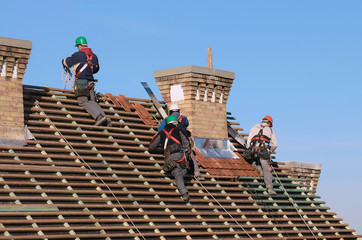
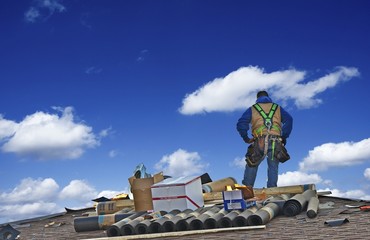
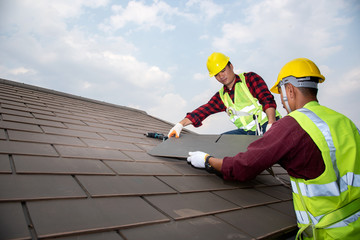
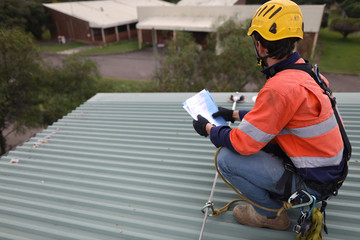
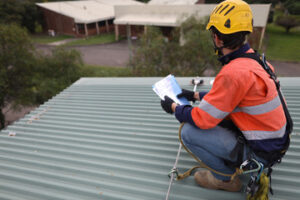
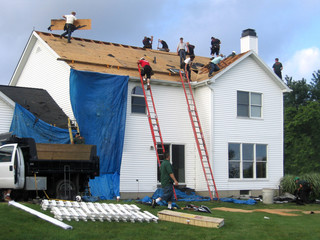
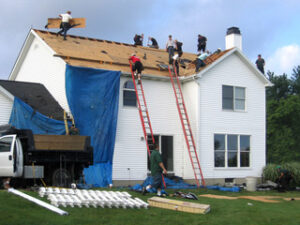 Overlays are another way to enhance the looks of your roof. The process of overlaying your roof is known as reroofing.
Overlays are another way to enhance the looks of your roof. The process of overlaying your roof is known as reroofing.